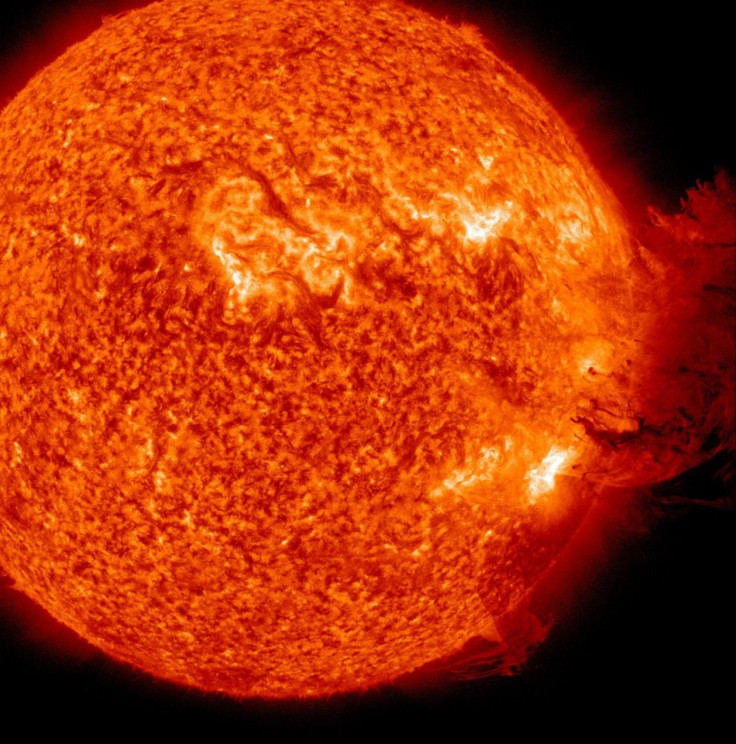Strongest Solar Tsunami in Years to Hit Earth Today; Auroras on Display

The strongest solar flare seen in five years erupted from the Sun on early Tuesday, and is heading towards the Earth which could cause radio, satellite interference and auroral displays on Thursday.
The flare, which is backed by a small radiation storm and a spectacular coronal mass ejection (CME), was a different kind as it started out slow, then the sun blasted it off like a volcanic eruption.
NASA's solar dynamics observatory (SDO) observed the solar flare peaking at 1:41 am ET on Tuesday. A sunspot complex on the solar surface became unstable and erupted, resulting in an M2-class solar flare, S1-class radiation storm and a spectacular coronal mass ejection (CME).
The CME, travelling faster at 1,400 km/s, should deliver a glancing blow to Earth's magnetic field during Thursday and Friday, which could disturb Earth's power grids and global positioning systems that heavily rely on satellite communications.
High-latitude sky watchers should be alert for Auroras or Aurora Borealis. The aurora borealis (Northern Lights) and aurora australis (Southern Lights) will likely be visible in the late hours of June 8 or 9. The aurora will mainly be visible in North America, with the sun illuminating most of the auroral zone in Russia and Scandinavia.
Visible auroral activities are predicted for Thursday and Friday as well, overhead from Inuvik, Yellowknife, Rankin, Igaluit and the surrounding areas. The visibility may be low on the horizon from Seattle, Des Moines, Chicago, Cleveland, Boston, and Halifax on Thursday, and Prince Rupert, Calgary, Minot, Bemidji, Stevens Point, Traverse City and Quebec City, Canada on Friday.
The wait for the CME continues. As it is expected to make but a glancing blow on the Earth's magnetic field, the timing of the impact is difficult (much more straightforward for a direct hit). Look for G1 (minor) Geomagnetic Storm conditions from 1200 UTC June 9 through June 10. The possibility remains for heightened Radiation Storm levels with the passage of the CME shock, but nothing greater than S2 (moderate) is forecast, the National Oceanic and Atmospheric Administration's (NOAA) space weather prediction center said in a statement.
NOAA space weather prediction center issued a 3-day solar-activity forecast on June 8 at 10:00 pm UTC, where solar activity is expected to be at very low levels through June 11.
In the geophysical-activity forecast, the center expects the geomagnetic field to be at quiet to active levels on Thursday due to the arrival of the halo CME observed on June 7.
Unsettled to active levels are expected on Friday with a chance for minor to major storm levels as CME effects persist. Activity is expected to decrease to quiet to unsettled levels June 11 with a chance for active levels as CME effects subside, the center said.
The center said there is a chance for a greater than 10 MeV proton event at geosynchronous orbit on June 9 and 10 due to the arrival of the CME.
© Copyright IBTimes 2024. All rights reserved.





















